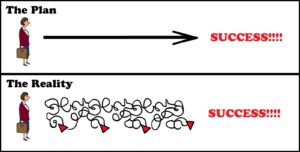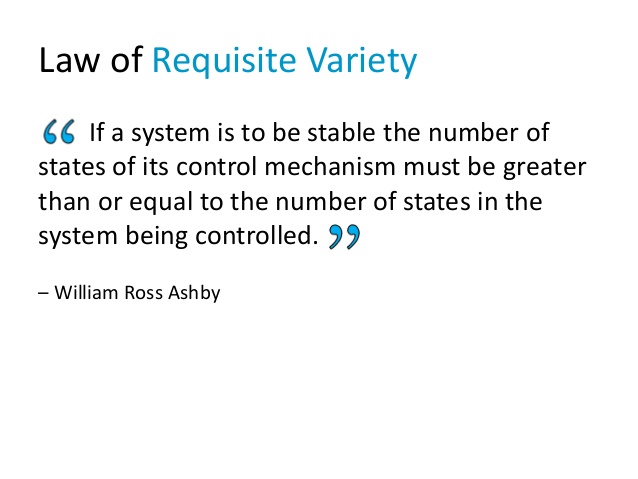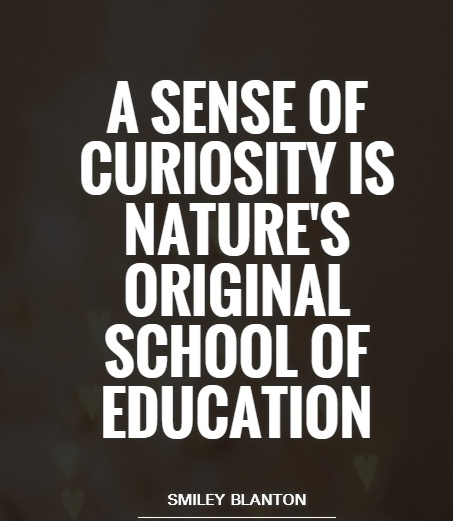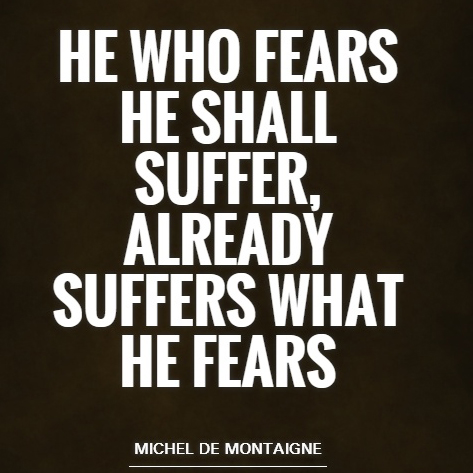The Order of Battle
Understanding the challenge
Plan A, business as usual, is a climax ecosystem. People in the OD organization are in functional balance with each other and with existing abiotic factors. OD is the last stage of ecosystem succession for hierarchical society. While Plan A is not self-correcting, it is self-perpetuating on automatic reaction to disturbances, unfazed by turnover. It is loyal to Plan A even after the funds run out, as they must, going through liquidation.
Plan B is a stable, self-correcting ecosystem, a unification of opposites, that requires incessant husbandry knowhow to remain so. Proactive, loaded with competitive advantage, Plan B is focused on efficient performance. It cannot run out of funds. Plan A was never about prosperity, but social status by domination (authority).
The goal of this developed knowledge is for you to thrive while you’re still alive. The law of Nature that controls thriving is that you, as an ecosystem yourself, can only thrive when your social context is thriving as well. This law is generic for all ecosystems, all species. The law explains why the failure of human social systems, from alive to dive, is always cataclysmic and abrupt. Even the keystone species of an ecosystem of species cannot thrive unless his ecosystem is thriving. The keystone otter that dines on urchins needs the kelp bed healthy to feed the urchins.
Efforts to be allocated are physical and cognitive. The subconscious allocating apparatus is notoriously and permanently imprudent while the conscious mind, which can be prudent, is normally reluctant to invest cognitive effort – as if it were illegal. You can be prudent, of course, but your conscious mind Prudentia must be proactive, oblivious to social pushback. Everyone has a third mind to prod their Prudentia into performing her due diligence. We hypothesized the third mind, still in testing, to rationalize our considerable experience in negotiating with Prudentia to good effect with our compelling purpose. It is not yet clear which mind is behind our long inner transformative journey, the compelling purpose of our existence.
The more you stumble towards regimes of greater hidden significance, the less support you will encounter. When you finally reach the mother lode, the holy grail of understanding, you will only see the backs of fleeing men. W.L. Livingston (1986)
The Agenda of Work
The cornerstone of making prudent choices is protracted cognitive focus, bring unconscious elements into our conscious minds.. Lot’s of energy is consumed in making appropriate selections. It stands to reason that if the standard is no-brainer, no responsibility, no effort, the way of prudence must be a PITA by contrast. Plagued by the law of optimality, the work of prudence has to start right and build knowledge in a logical sequence of task actions. The campaign of prudence cannot be random or sporadic. The order of battle is generic.
Sequence of milestones, staircase landings
- Examine and evaluate the need to choose made conscious
- Evidence acquisition. What put the need to choose into your cranium?
- Source (trustworthiness, legitimacy), stakes, complexity, urgency.
- The issue driving the choice, the problem to be solved
- Determine stakes
- Determine scope of choice: Ashby’s law of requisite variety
- What’s completely in-scope
- What’s out of scope that is in communication with in-scope (penetrations)
- Compose candidate qualification criteria. What done looks like.
- Goal specification
- Requisite variety
- Invent candidates
- Qualify candidate dynamics
- Avatar-enabled dynamic simulations of candidate futures
- Cull/add candidate list
- Compose risk acceptance criteria
- Risk assessment, FMEA, of candidates
- Determine winner by risk-informed performance data
- Compose implementation stop rules
- Field-implement candidate
- Compare predicted to actual performance
- Repeat agenda where indicated
1. Exploring the source
Stop! Think! You have to do something else first.
This law of optimality calls for upstream investigation before action. A mistake up front is carried forward, increasing the size of its wrecking ball as it goes. Never take the assignment to choose at face value. If the source had its act together, it would have chosen for itself.
Accordingly, it is prudent to check on the origin of this imperative to select. Is it legitimate? Is it trustworthy? If it’s your own subconscious mind, it is a basket case. If it came from above the 2½ rule, it’s bogus. Typically, the source is obviously untrustworthy and quickly identified as such. Before you retreat into your bomb shelter, identify the issue that triggered the delegation of responsibility.
If the source is untrustworthy, it’s a safe bet that the choice it wants you to make will not solve the problem that triggered the assignment. The last thing you want to do is work on the wrong problem.
2. The stakes
Stop! Think! You have to do something else first.
Making prudent allocation choices for your efforts varies significantly with what’s at stake. When the stakes are low, the bar for prudency is low as well. With low stakes issues, you can afford to learn by rapid trial and error using your nobrainer intuition. When the stakes are high, there are no criteria for stopping short of the full armamentarium of objective allocation practices. If you have a medium stakes case, whatever that might be, you leave procedures out of the high-stakes set at your own risk (TMI). What follows is expressly for high-stakes choice making. If you have to do it at all, you have to do it all. We don’t know why that is, but for now, that seems to be the case.

It can be challenging to determine the stakes. Errors can easily be made on both sides. In most cases, however, the choice between low-stakes processing and high-stakes processing is obvious. In practice, if you make the wrong choice, it’s soon apparent and processing can be switched before damage accumulates. Stakes include upside opportunities as well as downside consequences. Remember the 1970s choice of Xerox PARC to abandon it’s commanding position in personal computers to Steve Jobs?
3. The scope
Stop! Think! You have to do something else first.
Because of multiplicity effects on complexity, it is necessary to limit the span of requisite attention on an objective basis at every opportunity. When we know the least about the problem, we use an exercise that involves everyone related to discuss what is totally in-scope and what is totally out of scope that communicates across the distinction. This exercise is guaranteed to create havoc. The bedlam is necessary to break the silence.
The exercise exposes the different viewpoints and perspectives. People find out that no two of them are on the same page. It’s a variation of the Abilene Paradox. The debates, invariably heated, can go on for some time but in the end everyone counts the exercise as extremely valuable. The leader of the exercise prepares the scope document and it holds up until an unforeseen “surprise” pops up.
4. Goal specification
Stop! Think! You have to do something else first.
Getting the right goal specified with the necessary detail is seldom done and seldom disputed when it is. What could possibly be the value in going to all the trouble it takes to make prudent choices – and end up reaching the wrong goal? Our big-project experience made it clear that the official handoff of the goal spec to us implementer-grunts always failed to address the core issues. At the time we didn’t know why. Getting it right is a lot of intelligence and work.
When we learned to stop work until we nailed the right goal through evidence, the embarrassed administrators returned to their burrows for the duration. In fair exchange for autonomy, we took responsibility for delivering a successful outcome. When project success was obvious even to bystanders, the administrators were summoned to take the credit. Workers on a successful project do not need to be told it was successful and what part they played. They knew it was going to succeed when the right goal was defined, the keystone voluntarily took responsibility for success, and happy Plan B was the standard of work. That’s why the cooperation and collaboration ran at full throttle. They do so for no other reason.
Requisite Variety upfront
William Ross Ashby published his application of control theory to choice-making right out of medical school in 1932. He never thought requisite variety was anything more than common sense. History has shown that while the common sense of Requisite Variety is widely known, it is rarely practiced. The reason, we surmise, is the amount of cognitive effort entailed and the disdain for Ashby’s law exhibited by the aristocracy.
His Law states: Only variety in response options can contain the variety in behavior the social system is capable of exhibiting. The law is fundamental in all sports competitions. To put the law into the task allocation process is to project into the future and invent preventative measures to handle possible disturbances.
Three Mile Island was an example of requisite prudence in design, while Fukushima was an example of imprudence with requisite variety. The aristocrats of the Japanese utility chose safety systems by intuition. Chernobyl was a case of attempted defiance with requisite variety in the extreme.
Implementing Ashby’s law takes autonomy, competency, and actionable-quality information (AQI). You have to be free to follow the evidence of risk and rule-based behavior is the antithesis of creativity. The responsibility for requisite variety must be freely taken by those doing the work.
For any material system, eco or not, It is necessary to apply Ashby’s Law of Requisite Variety to the decision process before evaluating the first choice. Making progressive subconscious choices as new information intrudes the scene is a habit full of mischief. This law of regulating systems states that your span of control options must be greater than the variety in behavior the system to be controlled may exhibit. This determination is the beating heart of all choice-making.
Do you have enough choices to handle the variety the system may exhibit?

5. Invent candidates
Stop! Think! You have to do something else first.
In practice, candidate selections are being made via Brainiac from day one. Every time reliable information is added to the pile, more candidates are invented by your subconscious. This step is aimed to write them down and consider them with your conscious mind, Prudentia. Your conscious mind, while slow, is entirely capable of creative acts especially by making logical combinations.
There can be no restrictions as to the number of candidates. The next step (6.) will quickly whack the list down to size. The fear of missing a good design should outweigh the fear of selecting a bad design.
6. Dynamical qualification of candidates
Stop! Think! You have to do something else first.
This step is the central pillar of choice-making. Rather than implement the candidates in the operational reality and learn about their dynamics by measuring real time performance, this basic task runs the candidates around an appropriate proving ground. The test track of choice today is dynamic simulation of the candidates using modular modelling programs based on mathematical physics. Your avatar then goes forward in time to investigate the future dynamics of the candidates via mathematics.
Run, Break, and Fix (RBF)
Since prudence is a clinic on foresight and the curiosity that enables it, it is always dealing with novelty, unprecedented conditions. To build reliable knowledge of system dynamics, as prudence requires, you must build and test prototypes to simulate the novelty in advance and go there to study. Rudolf Starkermann was the pioneer of using industrial control theory, a field where he was a recognized authority, to dynamically simulate hierarchical social systems. When we learned by reality testing that his models worked 100% of the time, the rate of learning exploded. In fifteen years, the number of runs of Starkermann models exceeded two million. With his models, just like the cosmologists, we could explore prudence where no man had gone before, and we did. Collaboration with Starkermann was key to getting to plan B in 2013. All prudency is predicated on foresight, an operation on hindsight.
Trustworthy foresight is so essential to prudency, it has been made deliberate with conscious-mind protocols. Creating a mathematical-physics future to study its dynamics wherever curiosity led us, was instrumental in making it to Plan B. Dynamic simulations of social reality are basically sending our avatars out into the future as vedettes. When assumption calamity strikes our vedettes, and it is not an uncommon event, we send them to avatar hospital for repair and lessons-learned.
Better them than us.
7. Compose risk acceptance criteria
Stop! Think! You have to do something else first.
Typically the most contentious step in the prudent choice-making process, making choices about the criteria of risk acceptance is avoided by everyone. Since there is no such thing as zero risk and the 2nd Law turns everything into flyash, no one wants to set the measurement using his opinion for which he might bear responsibility for disastrous results, foreseeable or not.
8. Risk assessment
Stop! Think! You have to do something else first.
No way around it, this FMEA task is a drag. It takes a lot of focus time and it seems endless. There are so many failure pathways to explore that using the computer model for every one is impractical. The answer is operating expertise, system familiarity and judgement until a snag is located. Then the bad failures are modelled. Common practice in aerospace and nuclear power.
In prudency, this step is the major source of mischief. It is a variable few understand and emotions run deep. In many cases this is where authority pulls rank to move things along.
9. Determine top candidate by risk-informed performance
Stop! Think! You have to do something else first.
The time to pick the first finalist has arrived. The knowledge and evidence has been gathered is as good as it’s going to get, for now. The candidates can be ranked by performance and risk in any order. It’s essential to recognize and discuss the known biases and evaluate their possible effect. The risk assessment is to counterbalance the performance bias. The measured tendency is strong to downplay the risks associated with your emotional favorite. It’s a fact of control theory that the closer you get to maximum effectiveness, the more sensitive it is to disturbance. Just like racing automobiles, the lead cars can go unstable in dramatic ways.
10. Compose implementation stop rules
Stop! Think! You have to do something else first.
Do not be surprised when project success infuses anxiety into the head shed. It bet on failure and it takes Plan B success as a threat to its authority. Social status, being their supreme value, drives the head shed subconscious into sabotaging the project. The various ways authority can cripple the project are presented for signoff at the beginning of construction. A stop rule violation instantly stops the Plan B program. We’ve encountered our share of deliberate violations. The workforce becomes furious.
11. Implement finalist
Compare predicted to actual performance
When the thinking phase is over, the focus turns to constructing and operating the finalist in its role. Instrumentation of variables is the grand jury of success. It takes time to gather, analyze, and hang the data on the conceptual racks.
12. Repeat agenda as feedback analysis indicates
Operating experience with the installed finalist choice is the ultimate truth about the prudent process employed. Once the significant variables are validated, just like race cars, adjustments will be made to increase productivity and performance. Just like race cars, optimization requires eternal vigilance of the dynamics.
Impinging factors in allocation
There are several factors which influence choice making that do not go away because mathematical physics is being used for prudence. The strategy is to acknowledge these biasing factors and take them into account. For example, Daniel Kahneman cites research that showed judges sentencing before lunch are much more severe to the defendant than their sentences after lunch. The hunger bias. Blindfolded Themis carries a scale for weighing evidence, not an appetite meter.

In fact, there are so many biases impinging on choice-making, it’s impossible to know if our bias list is complete. Except for social status always at number one, ranking for a particular case is unwavering wavering.
- Social status
- Outcome responsibility
- Having your act together
- Trust
- Social media
- Government regulations
- Precedent, tradition
- Depersonalization
- Inalienable rights
- Natural law defiance
Social status
When you have your options gathered together and actually start selecting candidates, nothing ranks higher in value than social status. If you are authoritarian, your choices shrink to forms of punishing the lower classes. If you are performance-driven, your choices are reduced to whatever makes things better.
Because social status is always top priority, use it first to winnow the collection. As you might suspect, because what is chosen reveals the social class making the selection, the subject of social status motivation itself is undiscussable. The top class wants you to believe it is punishing you for your own good, while the MitM performance stratum doesn’t care about social status at all, considering it a waste of time and effort – which it is.
Experience teaches to settle the social status orientation factor upfront. When you find choices reflecting authoritarianism, opinion-based POSIWID, all biases are in full bloom. Authority is granted by the biased-laden opinions of others. Write the imprudent ones off and man your defenses against the madness.
When your scope is rightfully confined to operational performance, a menagerie of biases leaves the arena of work. Your social power comes solely from your measurable performance for the good of the group, no opinions involved. Keystones have direct control of their social power.
Outcome responsibility
When it comes to allocation of efforts, the issue of who’s freely taking responsibility for attaining the goal looms large. If it’s the keystone, the only level at which outcome responsibility can be authentic, you ditch your CYA files and get with the program. If it’s the usual situation, responsibility for good results is undefined and for cause. When a potentate announces that everyone is responsible for project success, run for your life. Without authentic outcome responsibility, the project is doomed. Turnover itself will kill effective goal-seeking in the crib.
Ducking the responsibility requisite is management’s way of informing the workforce that their “inalienable” rights have been suspended. In those cases, only the keystones can reinstate them for their workforce.
When the keystone fails to take responsibility for project success, the workforce soon recognizes his choice. Ca’canny is the instant response. That means at least 25% of available project productivity is taken off the top, a sunk cost. In ca’canny, choices of effort are drastically restricted to low group “norms.” It’s a psychologically-unhealthy situation. It’s painful to perform below your capability. The very idea of efficiency reduction is contrary to the instinct of workmanship. The snap decision of Brainiac to perform below your competency level brings long term consequences to your mental health.

The media and its control of government
Socialized to trust authority and the media it controls to dictate your choices, you are conditioned to choose as your peers choose. If by now you haven’t learned that they are ancient partners in corruption, you are already suffering the consequences of bad choices. It’s the reason for the Second Amendment.
Because the social media has taken the manipulation of human choice to unprecedented levels of sophistication, hijacking your brain, it has made them rich and powerful. The credulous people whose biases they exploit remain clueless about the algorithmic cause of their poor choice-making. The full range of consequences from media-driven allocations of your efforts are still playing out. Meanwhile, FB, feeding you cotton candy, is your sworn enemy of freedom to choose what’s best for you.
All three branches of government, the institution you were instructed to obey, all demonstrably corrupt, only act to increase your punishments by exploiting your fear bias. When you don’t choose for yourself, the entity that chooses your efforts for you never has your interests at heart. How could it?
Context
Context plays a significant role in choice-making. Most of the manipulations of your choosing by the upper classes are done by controlling context. All choice-making is context-channeled.
As an ecosystem yourself, involving many billions of parts and dependent microscopic creatures by the trillions, you can’t deliver the goal without a supportive context and fortuitous timing. To flourish, you always depend upon environmental circumstances aligned with your purpose.

Trust
Prudent choice-making is married to trust. As imprudence cannot be forced on you, you cannot force others to be prudent, to be trustworthy. “Trust me” is a directive and a dead giveaway. Trust has its own page on this website.
Socialized biases permeating choice-making on subconscious autopilot can be trusted only to deliver unsatisfactory results.
Personalization
All prudent allocations of effort are personalized. Choices impact people in particular, not in general. It is all too common that authoritarian choice-making is done on a deliberately impersonal basis. By treating people as replaceable objects rather than unique, creative, and valuable personalities, the potentates lose all trust, permanently. The determination to distrust made by those betrayed took less than a centisecond.
Everyone reacts to depersonalization in a flash. It is a reliable signal that your inalienable rights have been alienated by authority, enforced by law. Along with curiosity, trust leaves the social arena for good as defensive routines become ubiquitous. The threat to your security is met by withholding efficiency of work. Operating by defense instead of offense is expensive and counterproductive. The future holds no promise of relief. Class warfare has commenced. All lose.
The 2nd Law
Few things in life are more absolute than attempting to defy the 2nd Law, the most secure natural law in the collection of universal laws. The 2nd Law, all by itself, destroys rule-based behavior, maintaining status quo, and keeping viable via business as usual. If there is no proactive action to extract entropy buildup, prudence is impossible. There is no workaround for the 2nd Law. If there was, immortality would be common among the aristocracy. God saves no Queen indefinitely.
Having your act together
The problem with trust and prudence is that the subconscious mind decides about your “togetherness” in less than a centisecond. Brainiac is so astute at detecting frauds, it’s a waste of time to try deception. If you don’t have your act together, it shows in so many subtle ways known to Brainiac, you will not be trusted. How do you get your act together? Adopt prudence as your way of life and become proficient in the chores of prudence. Yes, it’s work for your brain.
Brainiac’s arsenal is impressive in functionality. While your subconscious mind is incapable of making sagacious allocations of your effort, when it comes to operating your endocrine system, it is a genius, fully compliant to natural law’s control theory. When Brainiac finds out your conscious mind has vetoed his imperative, he counterattacks by changing the settings of your hormone factories to convince you otherwise. A shot of testosterone here, a shot of adrenaline there, and off track you go. All this happens without disturbing Prudentia. It is changeless truth.
When you do get your act together, it will be recognized and trust will flow automatically. Your competency is your publicity.

The 2½ Rule
Just like entropy, there is no workaround for the 2½ Rule. The telephone game demonstrates the rule perfectly. No matter what, information cannot travel vertically more than 2½ levels before turning into garbage. While the keystone gets high fidelity from his workers, because he is there cheek by jowl, and he can present actionable quality information (AQI) to his superiors, it cannot come out from his superiors intact. It is the launchpad of GIGO.
The 36% Rule
Staff turnover has been a topic of great interest for decades. High turnover kills prosperity. High turnover kills safety, quality, and competitive advantage. Only when Plan B went critical in 2013 did we get to measure the scope of turnover influence at various levels of turnover. Background turnover runs about 10%/year. It takes effort to adjust to the loss, but it is unavoidable and temporary. With implementations of Plan B we learned that the drop in turnover leveled out at about 15%. Considering every Plan B application started working with a Plan A organization with no less that 85% annual turnover, the workforce considered it miraculous.
Knowing the cost to replace and train new employees to Plan B grade, the critical turnover rate computed out at 36% for Plan B. That is, if your turnover got to be higher than 36% per annum, Plan B would die before your eyes. In practice, Plan A organizations rarely have turnovers below 36%, the national average being 42%.
The 36% rule, established by simple arithmetic, is so steady that some mathematical correlations are being studied. As you may know, many patterns in nature are attributable to the Fibonacci sequence. Close to the rule is the Fibonacci number 34. Also close to the rule is the Fibonacci Retracement factorial constant 38.4%, a standard in stock market forecasting. Meanwhile, we digress.
It has also been noticed that any two successive Fibonacci numbers form a ratio that converges on the Golden Ratio 1.618034… The Golden Ratio appears everywhere in the patterns of Nature. Why not also in social patterns of behavior? We are early in testing this unproven, unlikely hypothesis. If it turns out to be relevant, it will provide a great tool for predicting social behavior.

Views: 149


